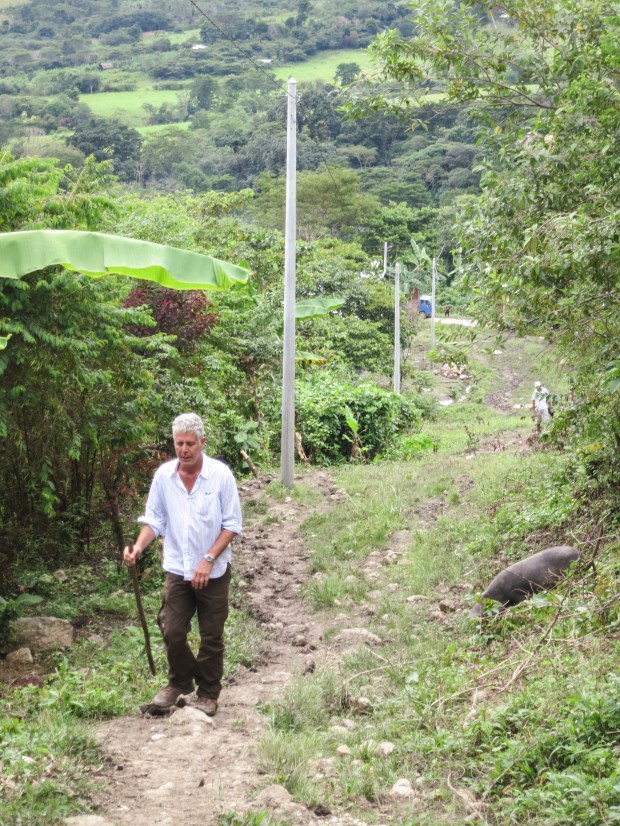On a previous trip, I bounced around Lima, exploring the ever-changing, ever more exciting food scene—from the more cutting-edge fine-dining restaurants to the funkiest but most delicious traditional cevicherías. I’ve had many Pisco Sours. Huffed up mountains, lightheaded from altitude sickness, my cheeks stuffed with coca leaves. I’ve eaten guinea pig in Cuzco. Explored the jungle of Amazonia. Drunk chicha with yucca farmers. I took ayahuasca in the middle of the night with a curandero, puttered upriver in a wobbly boat with imaginary bats screeching in my brain and lights that probably weren’t there dancing in front of my eyes. I have looked out over Machu Picchu at dawn—one of the most extraordinary experiences one can have in this life— watched millions of cutter ants strip a forest floor clean, made friends, learned something about the world and about myself.
So I didn’t really need a reason to go back. But this time I had a good one.

About a year ago my good friend Eric Ripert, the chef of the most excellent restaurant, Le Bernardin, in New York City, told me he had recently tasted the “best chocolate in the world” and inquired if I would be interested in getting involved in a probably foolhardy venture into the high-end chocolate business.
There were these beans, he went on to say, high in a valley in a mountain range somewhere in Peru—cacao beans from wild trees—and recently when their DNA was tested, they were found to be of a variety long thought to be almost extinct in their pure, nonhybrid form. Even more tantalizing—at an even more remote location was an even more rare all-white variety. He’d been to see them, and his stories of high jungle adventure coupled with delicious, delicious chocolate were … enticing.
Eric, as I knew well, LIKES chocolate. And as one of the best, most decorated, celebrated chefs in the world, he’s had a lot of it. Guys like Eric? A lot of very fine wines come their way. Expensive ingredients like truffles, caviar, very old Cognacs. It’s not just his business to know what the good stuff is: The good stuff finds him. What I’m saying is the guy knows his chocolate. So when he tells me that this Pure Nacional s*** from some little town in a remote mountain valley in Peru is the best he’s ever had? I’m interested.
We eventually come up with a mix of chocolate and nibs in bar form, and next thing you know? I’m in the chocolate biz.
Thing is, it’s a very boutique-y, very high-end, screamingly expensive end of the biz. One of the only 7,000 bars we were able to produce (the whole year’s supply sold off in just a few months) cost the nosebleed price of 18 DOLLARS. Even reflecting the remote location, the rarity of the raw ingredient, the long trip from the mountains to the city to Switzerland and then to the United States, the whole artisanal process … that’s still a f*** of a lot of money for a chocolate bar.

So here’s what I wanted to know:
Was I doing a good thing? Is it OK to be in the chocolate business? I don’t have any problem with wealthy people who can afford making impulse buys inexpensive gourmet shops spending a lot of money on my chocolate. But where does the money go? In fact … where does this chocolate come from anyway? Just about everybody loves the stuff. It’s everywhere. A fundamental element of gastronomy. But I knew so little about it. Where does it come from? How is it made? Most important: WHO does it come from? And are they getting a good piece of the action? Or are the producers, as in so many cases, getting screwed over? I very much hoped to find that whoever was growing our cacao was, at the end of the day, happy about the enterprise—that life AFTER Eric and Tony’s Excellent Chocolate Adventure was, on balance, better than life before.
I decided to find out.
So I invited Eric to take me back to Peru, up into the mountains, to follow the cacao trail all the way back to the source. There would be, as I was soon to find out, quite a journey ahead of me: many miles of bad road, vigilantes to pay tribute to, swollen rivers to cross, the kind of mud that swallows whole trucks, shamans to get right with, planes, bridges, boats, and ferries, long hikes up steep, slippery slopes into the forest … before we’d find our trees, hack open a few pods, and see what it was all about.
It turned out to be a great adventure.
Were all my questions about the morality of the luxury chocolate business answered to my absolute satisfaction? No. But this episode will show you some things—and raise questions about others—painting, if not an entire portrait, at least a fuller picture of one of the world’s favorite things to eat.
These field notes are excerpted from Bourdain’s Tumblr, posted on May 29, 2013.